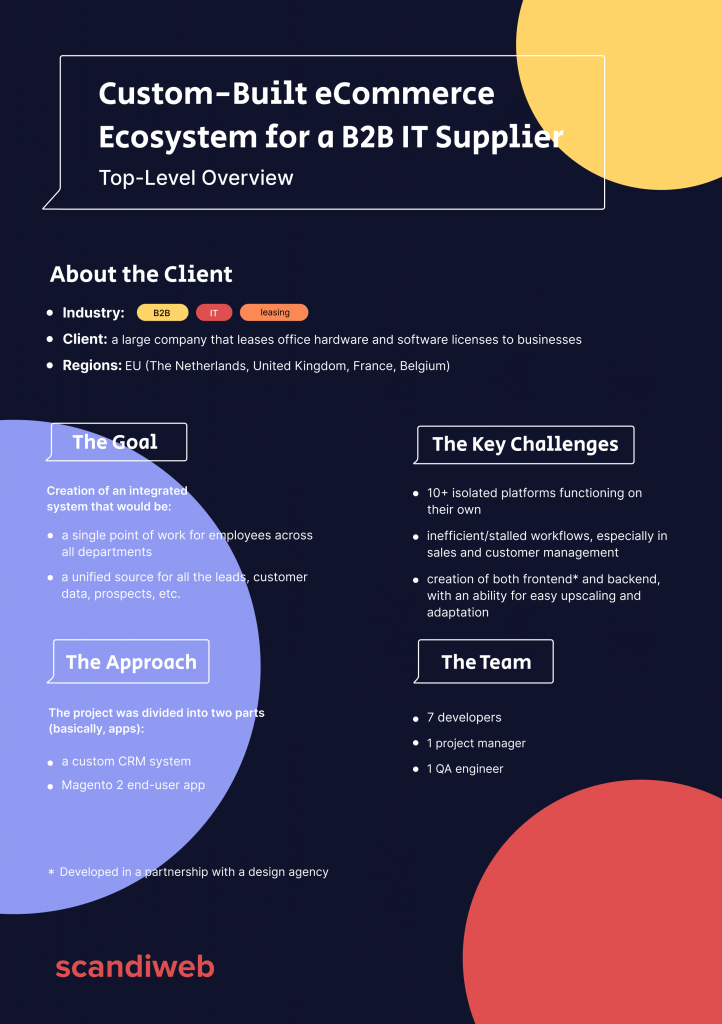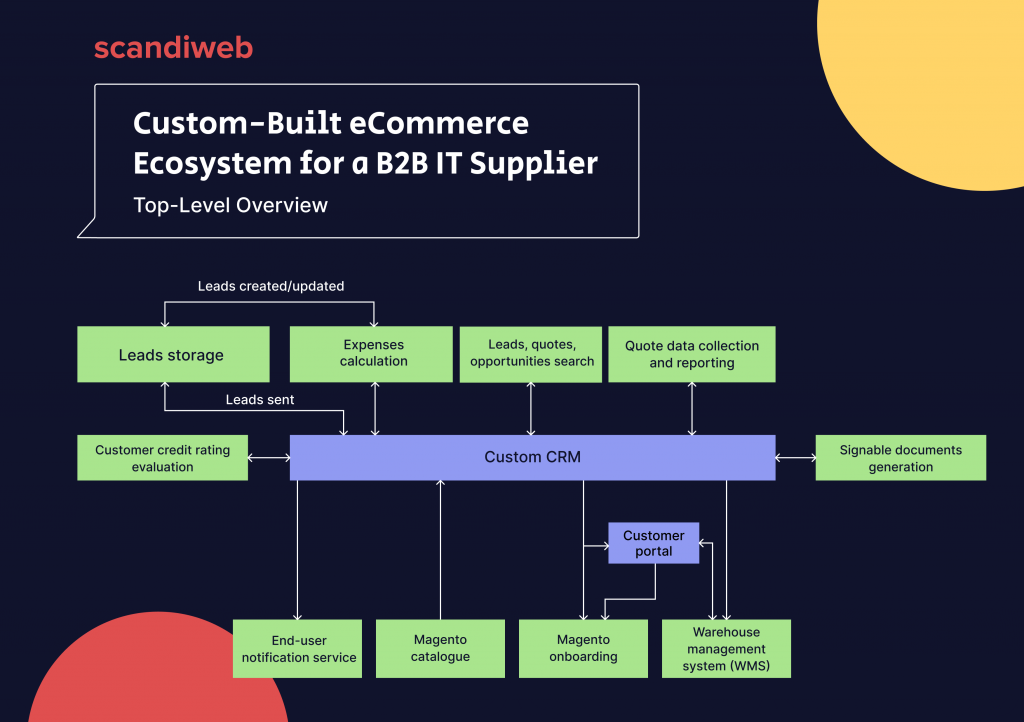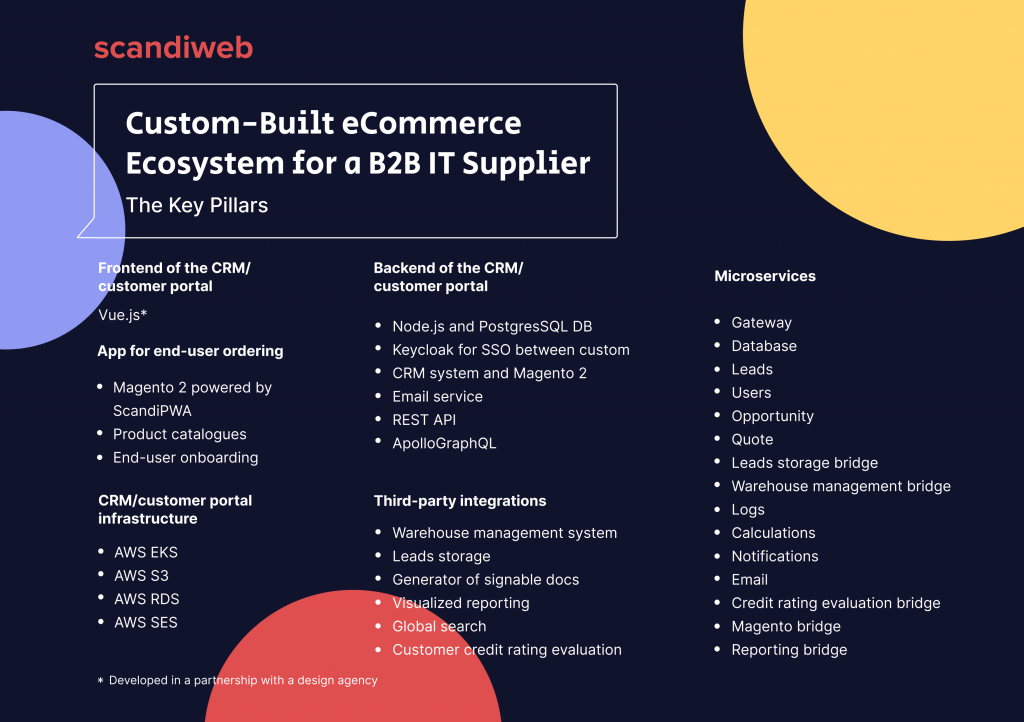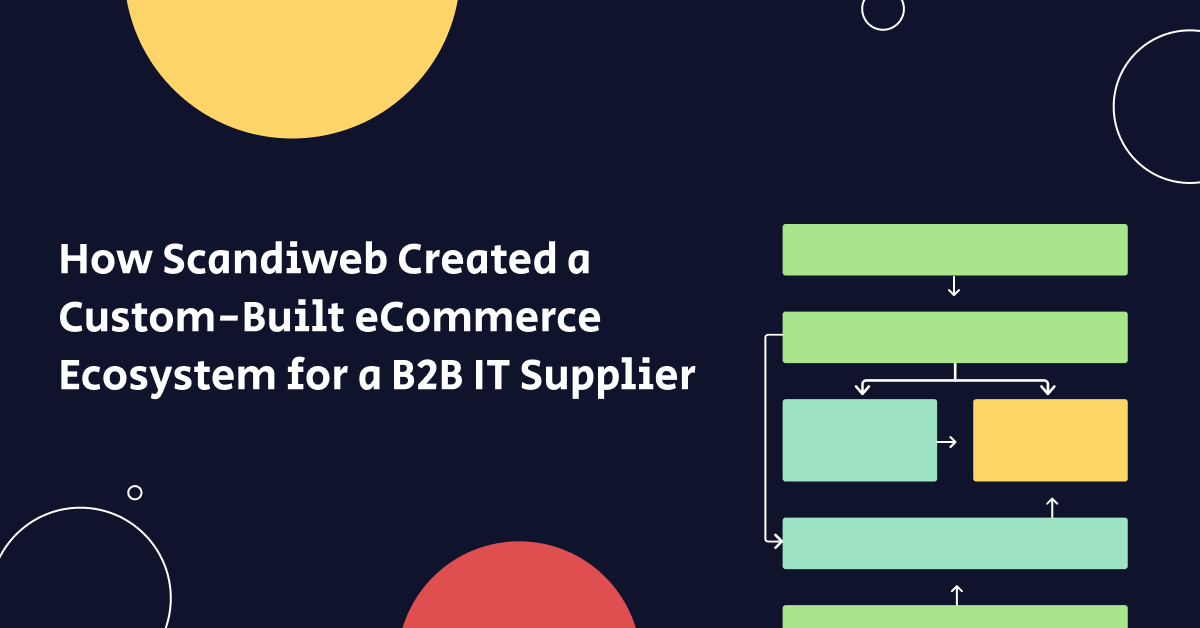Why technological consistency is important for B2B eCommerce companies
Technology integration is fairly considered to be one of the key challenges for B2B eCommerce. Without streamlined and coherently managed relationships, a company will just get permanently stalled by data silos. This can lead to profit losses, a downgrade, or even the company going out of business.
Challenges of B2B eCommerce
Usually, these outcomes can be a result of a company’s eCommerce ecosystem not keeping up with the business realities, e.g. sticking with legacy systems that just don’t provide the same output as they used to, relying heavily on out-of-the-box B2B eCommerce solutions or eCommerce platforms for B2B without proper customization, integrations, etc. The latter is especially true for large businesses that operate within sophisticated industries, like IT, automotive, pharmaceuticals, etc.
For such enterprises, bespoke dev services and 24/7 maintenance must always stay a rule of thumb. Otherwise, a company could face issues in storefront efficiency, sales numbers, automation, and so on. To stay afloat, avoid the challenges of B2B eCommerce, increase conversions, and improve ROI, a well-built B2B eCommerce platform is needed. Moreover, it is supposed to be regularly maintained and upgraded.
Recently, scandiweb has dealt with just a case. A large B2B IT supplier that was utilizing Magento/Adobe platform asked us to come up with a custom B2B eCommerce platform from scratch.
What made the case even more peculiar, was that the company worked with two different types of supplies: software and hardware. Even this alone had already made the case quite challenging, apart from all other things we were supposed to consider. Below is the overview of the project.
Magento B2B case study of building a B2B eCom ecosystem: challenges, goals, and approach

Our client was s large company that leased office hardware and software licenses to businesses. The company got offices and thousands of employees in the EU, meaning we had to deal with streamlining complex, multi-level data relations.
The main goal of the project was to create an integrated system that would be
- a single point of work for employees across all departments
- a unified source for all the leads, customer data, prospects, etc.
The key challenges scandiweb had to deal with on the project were
- 10+ isolated platforms working on their own, without any cross-connections and/or integrations
- inefficient/stalled workflows, especially in sales and customer management: the employees had to instantly hop from one platform to another
- creation of both backend and frontend, with the former being able to easily upscale and adapt to the business context; removal of services and the introduction of new ones could have zero impact on the CRM system’s efficiency.
All this seemed quite a pickle to solve, so we were more than excited to get down to business! Below is a top-level overview of the ecosystem we came up with.

How scandiweb approached the eCommerce website development process
The project was divided into two parts (basically, apps):
- a custom CRM system
- Magento 2 end-user app.
Also, for the customer service portal and dashboard development, we partnered up with an EU-based design agency.
How scandiweb built a custom B2B eCommerce CRM
To develop the CRM, the following was introduced:
- a flexible architecture, with 25+ microservices
- a custom-built system using Node.js and PostgreSQL database for the backend
- Vue.js for the frontend
- GraphQL as the communication level between backend and frontend
- REST API for enabling the communication with Magento 2 system and all other third-party systems
- Keycloak for SSO between custom CRM system and Magento 2
- ElasticSearch for search
- AWS S3 for data storage,
- and Kubernetes for managing containerized services.
The CRM system allows for the following:
- storage of end-user data
- customer onboarding and device management
- management of service tickets and devices
- reporting
- knowledge base
- customer management.
The key functionalities of the custom CRM system:
- selection of product bundles for the quotes
- management and application of subscription price for the quotes
- transmission of information to ERP on stock order and prices for products and subscription
- customer onboarding, with the information being passed to Magento 2 upon registration.
The CRM is run by administrators to store end-user data. The data is used for onboarding and device management. The customer portal is integrated with a warehouse management system, which allows the admins and end-users to start service tickets and manage their devices.
How scandiweb developed the app for end-user ordering
This is a system where IT admins and end-users can choose and configure devices themselves based on contractual terms. Bundle information is later sent to Custom CRM and warehouse management system for fulfillment.
To develop the Magento 2 + ScandiPWA app (customer storefront), the following was introduced:
- Magento Commerce edition for enablement of B2B features, which are utilized mainly for shared catalogs
- ScandiPWA theme.
The key functionalities of Magento 2 end-user app:
- creation and modification of product bundles that are then passed to the custom CRM system
- product ordering for individual end-users according to the agreements.
How the infrastructure behind the custom CRM system was set
All the infrastructure was built using AWS.
EKS
This service was used to store the Kubernetes cluster that contains all Microservices that were split into public and private parts.
RDS
This service was used to build the relational database.
SES
This service is responsible for sending emails.
S3
This service is used to store and transmit files.
What integrations were introduced into the new B2B ecosystem
A warehouse management system
This system is used for customer device management and support.
A data visualization system for reporting
This system collects opportunity and quote data from the CRM and creates visualized reports that are displayed in the customer portal dashboard.
Global search
This is a search system connected to the CRM that enables an easy search for leads, opportunities, quotes, etc.
Calculation of expenses and gains
This integration allows the potential customers to receive a calculation of their expenses and potential gains. The calculations are sent to the CRM system, with a lead also sent to the leads storage system.
Leads storage system
This system keeps the leads received from the calculation system and other external sources. Once leads reach a defined number in the storage system, they are sent to the CRM system.
Customer credit evaluation
This system evaluates customer credit rating, resulting in its approval or rejection. Also, it provides lease rate factors that determine the monthly cost of bundles.
Generation of signable documents
This integration enables an automatic generation of signable documents that are then sent to the company’s representatives and customers for signing.

Results
In the end, the scandiweb dev team was able to create a custom B2B eCommerce platform that
- is easy to upscale, allowing for a change of components without affecting the efficiency of the business
- enables consistent management of customer and product information and data
- introduces efficient workflows for the company’s employees across different departments, countries, and markets
- enables smooth customer experience for end-users
- enables an efficient B2B sales process.
Our B2B eCommerce experts are ready to help you with your project—browse our customized B2B eCommerce solutions here. Get in touch with us at [email protected] or using the chat bubble, and we will get back to you shortly!


Share on: